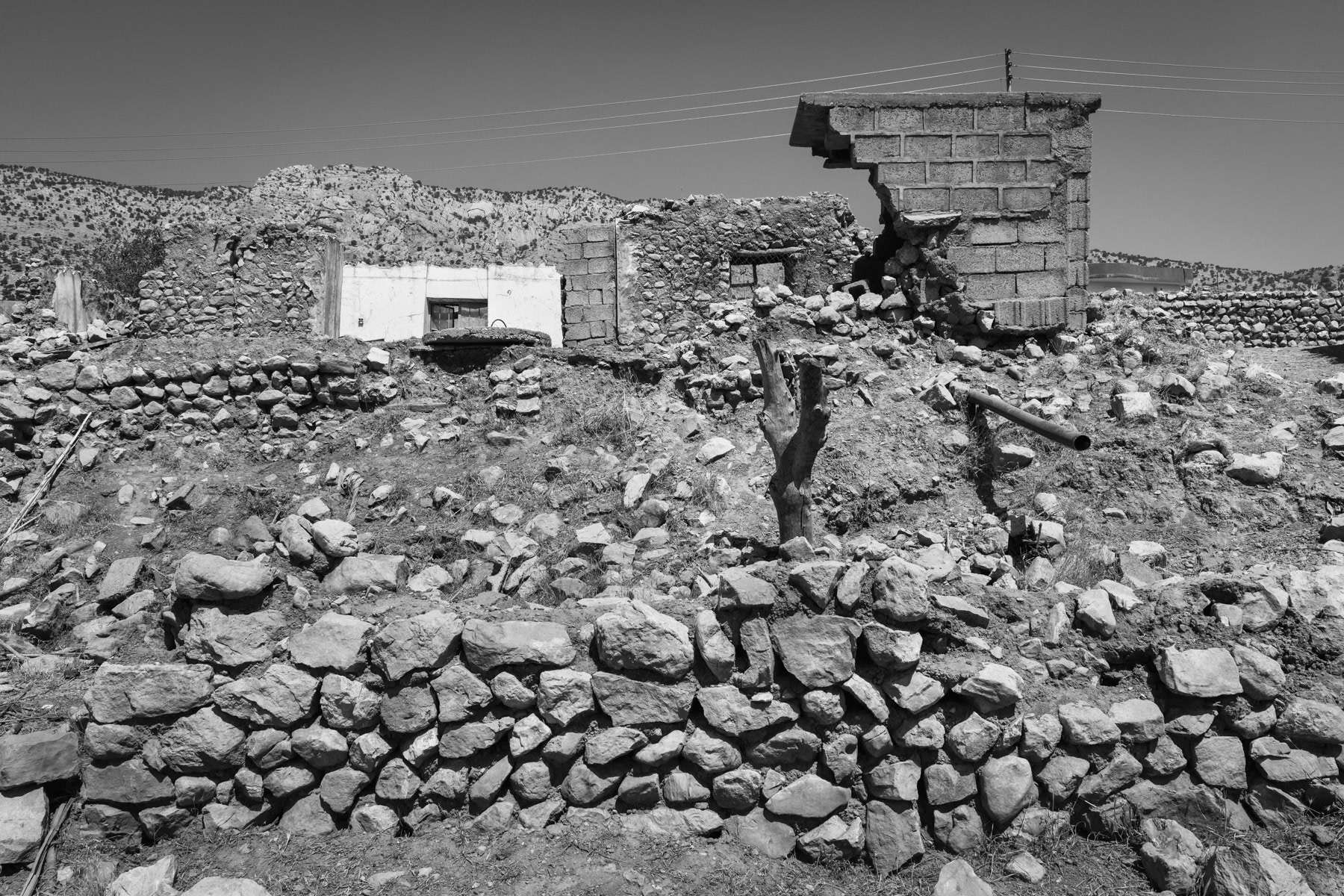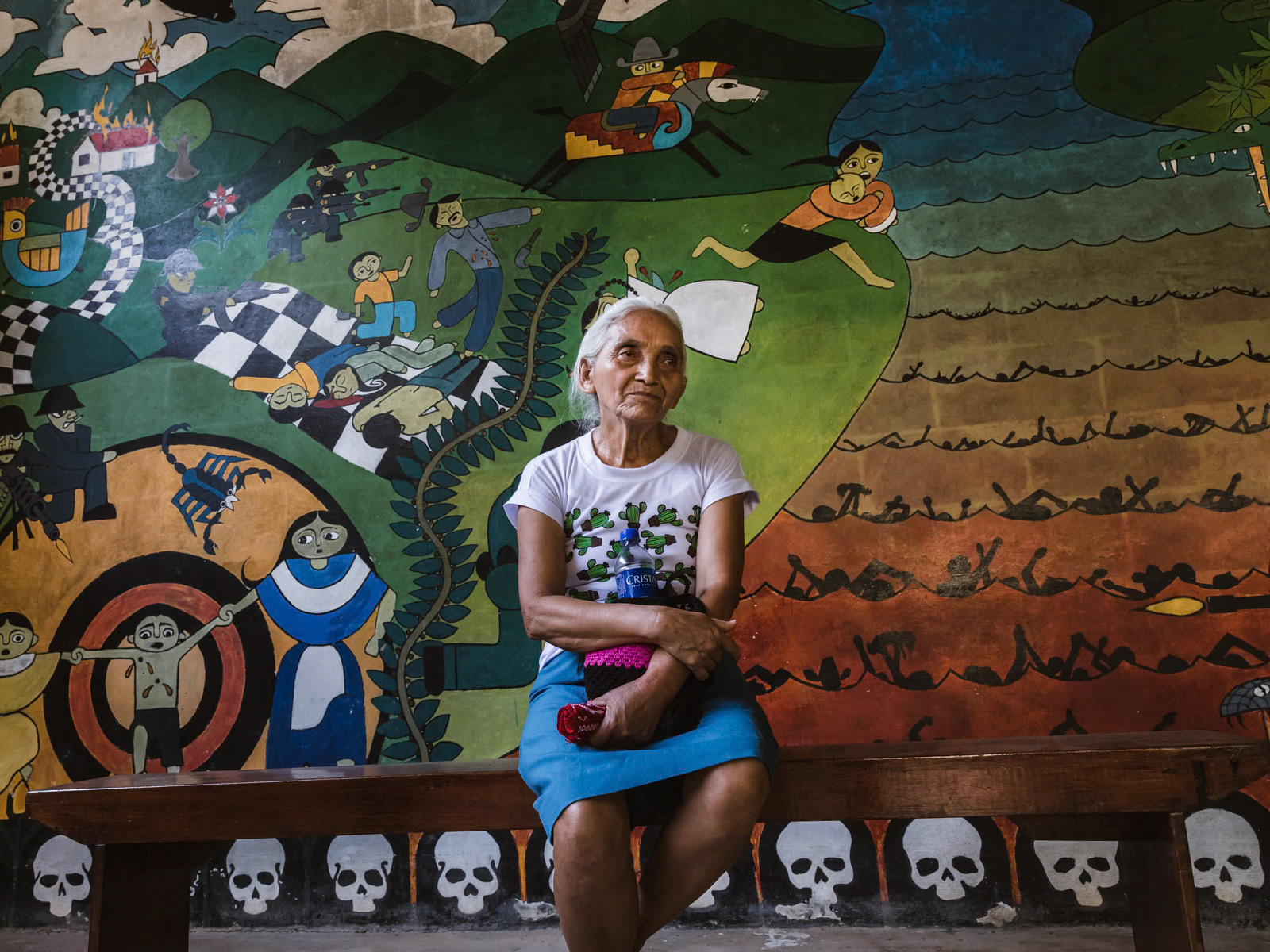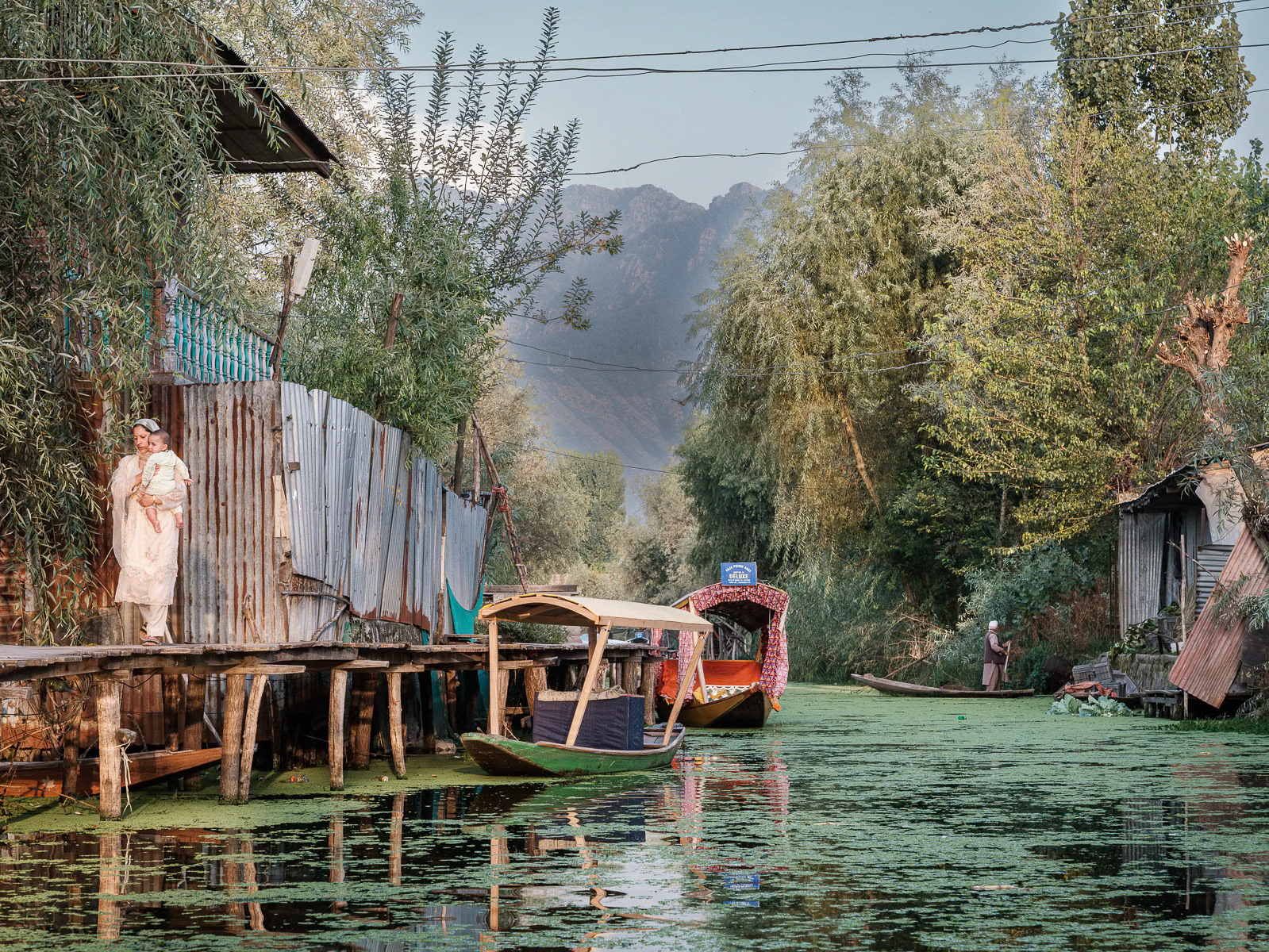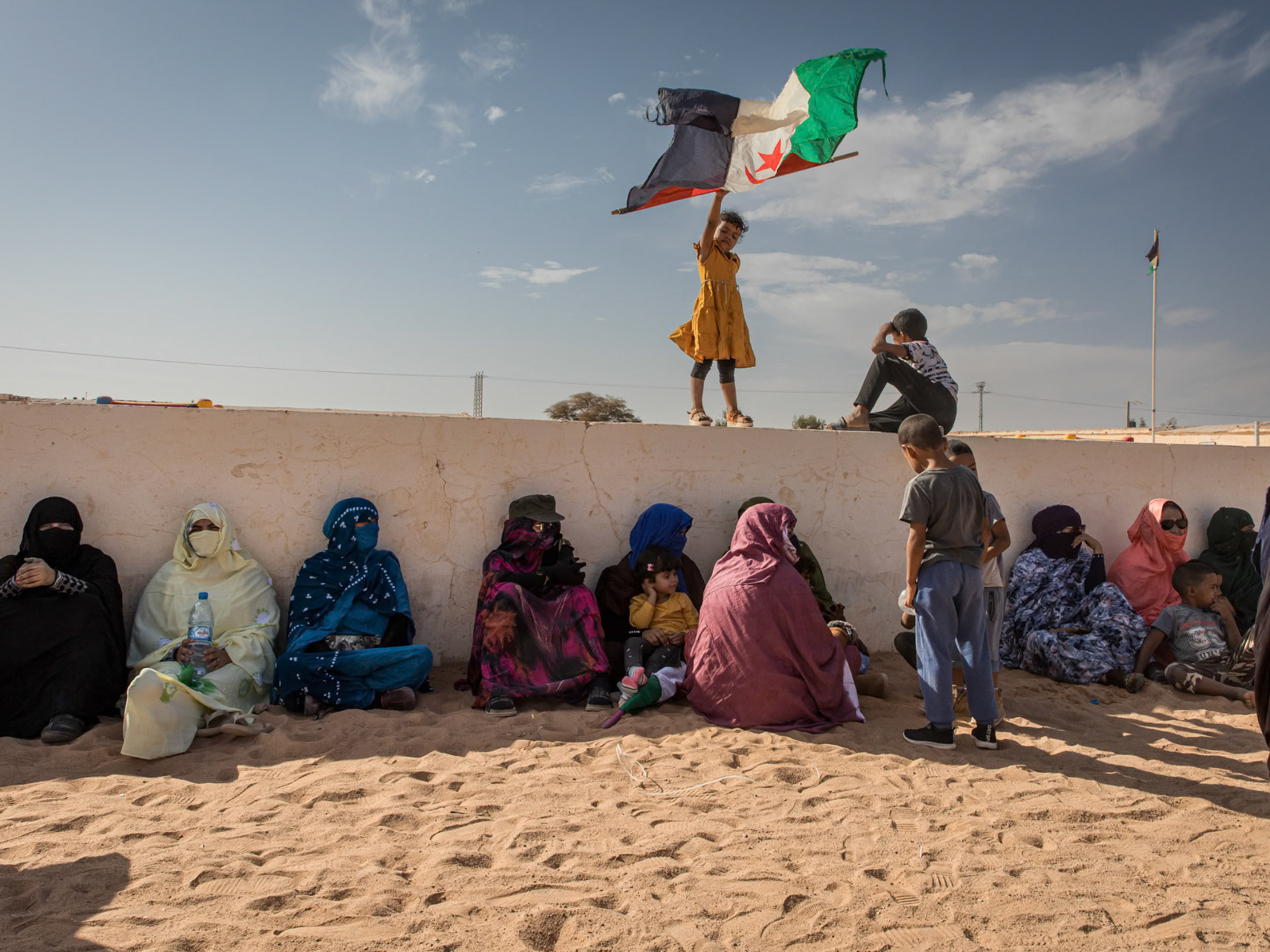On 16 March 1988, Saddam Hussein’s regime unleashed a devastating chemical attack on the Kurdish city of Halabja in Iraqi Kurdistan. Over 450 chemical shells rained down, releasing toxic agents that claimed the lives of 5,000 Kurdish civilians, including women and children, and left another 10,000 severely injured. Many of these survivors succumbed to their injuries in the years following the attack. The survivors were evacuated to Iran in the aftermath, later returning to northern Iraq after the first Gulf War in 1991.
Today, Halabja remains a symbol of resilience and tragedy. Around 475 survivors continue to live in the city, part of the Autonomous Region of Iraqi Kurdistan. Decades after the attack, they endure severe health and psychological challenges. Chronic respiratory issues necessitating oxygen support, systematic eye and sight disorders, fertility complications among those exposed as children, and high miscarriage rates are commonplace. Additionally, survivors struggle with significant mental health issues, stemming from the trauma of that fateful day.
Healthcare facilities in the region remain inadequate to meet their complex needs. Many victims rely on sponsorship to access specialized care in Iran. Halabja's story highlights the enduring scars of chemical warfare and the urgent need for better support and healthcare for its victims.

Soweiba, a victim of the Halabja chemical attack of 16 March 1988. She is blind since that day, mainly because it took more than one week after the attack to receive care and reach Teheran. Her five children and her mother all died during the attack. She has severe respiratory problems and requires frequently oxygen. She receives, like other recognized victims, a pension of 300 usd per month. Being alone provokes frequent anguish making her think about what happened 30 years ago and making her feel guilty that she survived. "I wish I died that day together with my 5 children who died in my lap" Halabja, Iraqi Kurdistan, Iraq, August 2018

Memorial for the victims of the chemical attack on Sewsenan village. The Sewsenan valley was a Peshmerga (Kurdish freedom fighters) hide out during the eighties and the Kurdish liberation struggle against Saddam Hussein. The village was attacked with chemical weapons on 22 March 1988, less than a week after the Halabja attack. Eighty persons died instantly during the attack, many more in the years that would follow. Contrary to Halabja, the victims could not be evacuated to Iran and were taken care off in surrounding villages and health centres that were not equiped to handle chemical exposure. The number of fatal victims was relatively low due strong winds that blew away the musterd gas. Survivors in today's Sewsenan feel isolated and forgotten and do not have the facilities that are available in Halabja and Iran. Sewsenan village, Suleymaniya directorate, Iraq, September 2018

Kamal, 47 years, is a victim of the Halabja chemical attack in 1988. He has life threatening respiratory problems requiring him to be at least 16 hours per day connected to an oxygen dispenser. He has been on daily oxygen for the past 10 years, before that occasionally at the hospital. He spends an average of 90 usd on various drugs and can't leave his home or be separated of the oxygen dispenser for more than a couple of hours. Before his condition got worse, he used to have an office job at the municipality. Halabja, Kurdistan, Iraq, August 2018

16 March 1988, more than 450 chemical shells were dropped by Saddam Hussein over Halabja in Iraqi Kurdistan killing 5,000 Kurdish civilians and injuring another 10,000 most of which would die in the years to follow. The survivors were evacuated to Iran in the aftermath and returned to northern Iraq after the first Gulf War in 1991. Today, 475 victims still live in the city of Halabja in the autonomious Region of Iraqi Kurdistan. They face severe health and psychological problems since the attack, such as severe repiratory problems requiring oxygen breathers, systematic eye and sight problems, fertility issues for those affected as children, high rates of miscarriage and serious mental health issues. With inadequate health services available, most patients can only hope to be sponsered and be sent to Iran for specialized treatment. Main graveyard and mass graves for the victims of the Halabja chemical weapons attack, Iraqi Kurdistan, Iraq, August 2018

M. Saeed, 36 years old, a victim and lone survivor of the Halabja 1988 chemical attack. Had 2 brothers and 2 sisters who fled with him during the attack, one brother and sister died during the attack while escaping, the other brother died in 1996 as a consequence of chemical exposure. He was eventually evacuated together with his 3 year old sister to Teheran where she was separated from him. To date he has never seen or heard anything bout his siter anymore. She is part of the disappeared children of Halabja, Nearly 100 children from Halabja that were evacuated as toddlers to Iran are unaccountable for, only 9 have been re-united with family during the the past 30 years. Living with the trauma of be the sole survivor of his family, he does his best to protect his children from the horror he went through. Halabja Memorial Museum for victims of the chemical attack with photographs taken by Iranian photographers shortly after the attack. Halabja, Iraq, August 2018

Atia, Mahabad and Mohamed, victims of the chemical attack in Sewsenan in 1988. The Sewsenan valley was a Peshmerga (Kurdish freedom fighters) hide out during the eighties and the Kurdish liberation struggle against Saddam Hussein. The village was attacked with chemical weapons on 22 March 1988, less than a week after the Halabja attack. Eighty persons died instantly during the attack, many more in the years that would follow. Contrary to Halabja, the victims could not be evacuated to Iran and were taken care off in surrounding villages and health centres that were not equiped to handle chemical exposure. The number of fatal victims was relatively low due strong winds that blew away the musterd gas. Survivors in today's Sewsenan feel isolated and forgotten and do not have the facilities that are available in Halabja and Iran. Sewsenan village, Suleymaniya directorate, Iraq, September 2018
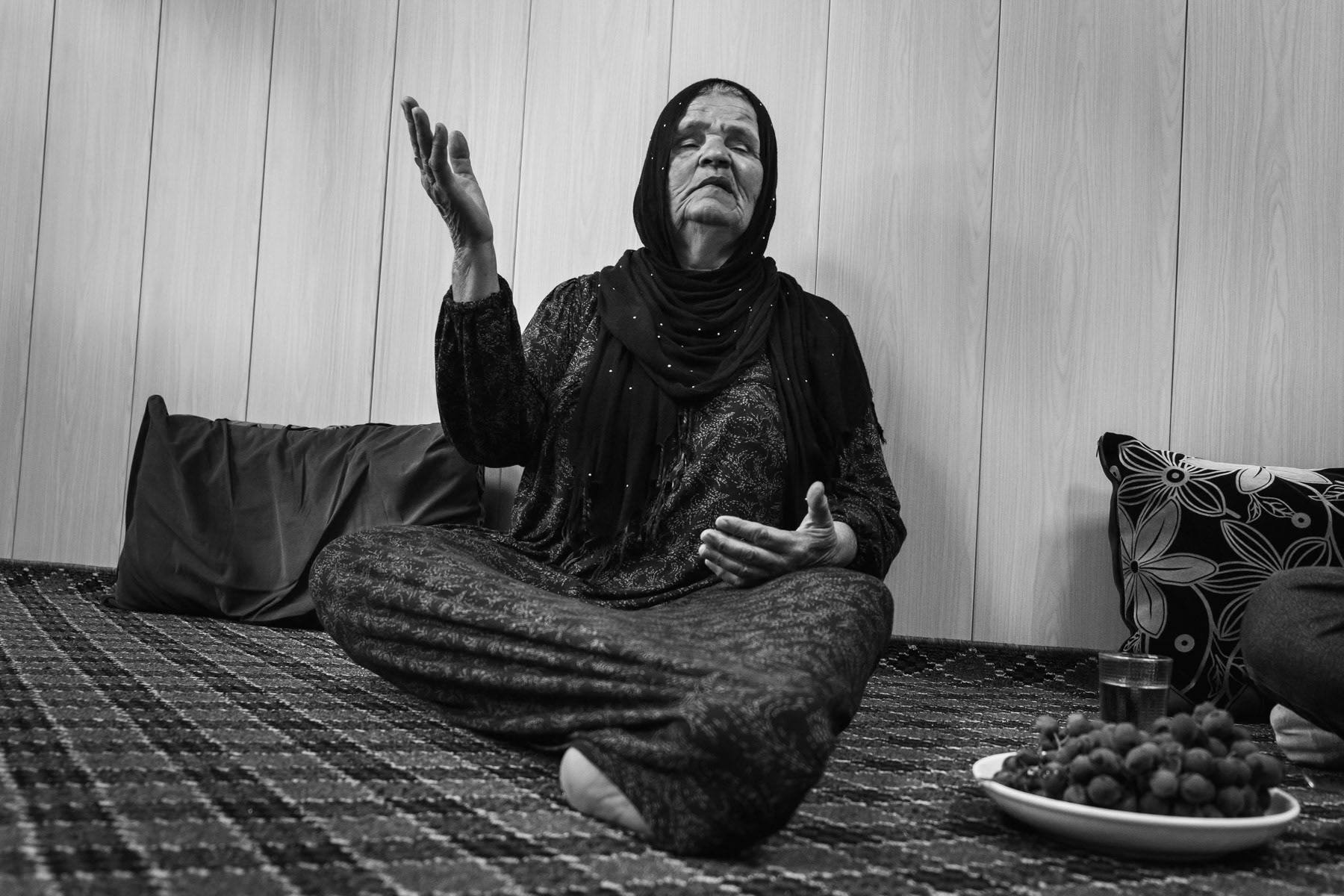
Atia lost 2 of her sons during the chemical attack in 1988. She has severe respiratory problems and can hardly walk outside, especially during dust and sand storms. Sewsenan village, Suleymaniya, Iraqi Kurdistan, September 2018

One of the numerous mass graves around Halabja where some of the 5000 victims of the chemical attack on the city are burried. More than 450 chemical shells were dropped on the city and surrounding on 16 March 1988 by Saddam Hussein's army, killing 5,000 and injuring another 10,000 Kurdish civilians. Halabja, Kurdistan, August 2018

A victim of the 1988 Halabja chemical attack waiting to leave for Teheran in Iran to receive treatment for his respiratory problems that are getting worse. Selected victims requiring specialized care receive 1000 usd to cover part of the medical, travel and accomodation expenses in in Iran. Center for victims of chemical exposure, Halabja, Iraq, August 2018

16 March 1988, more than 450 chemical shells were dropped by Saddam Hussein over Halabja in Iraqi Kurdistan killing 5,000 Kurdish civilians and injuring another 10,000 most of which would die in the years to follow. The survivors were evacuated to Iran in the aftermath and returned to northern Iraq after the first Gulf War in 1991. Today, 475 victims still live in the city of Halabja in the autonomious Region of Iraqi Kurdistan. They face severe health and psychological problems since the attack, such as severe repiratory problems requiring oxygen breathers, systematic eye and sight problems, fertility issues for those affected as children, high rates of miscarriage and serious mental health issues. With inadequate health services available, most patients can only hope to be sponsered and be sent to Iran for specialized treatment. Main graveyard and mass graves for the victims of the Halabja chemical weapons attack, Iraqi Kurdistan, Iraq, August 2018

Alwan, 38 years, victim of the Halabja chemical attack in 1988. She recently underwent cornia surgery in Teheran. She works as a volunteer at the memorial center where she found footage of herself in the aftermath of the attack. She lives now still in Halabja and is married and has 2 children. Halabja, Kurdistan, Iraq, August 2018

A photograph of Alwan when she was 8 years during the days after the Halabja chemical attack in March 1988. Alwa is now 38 years old and recently underwent cornia surgery in Teheran. She works as a volunteer at the memorial center where she found the photo of herself. She lives now still in Halabja and is married and has 2 children. Halabja, Kurdistan, Iraq, August 2018

Sabah had a cornia lens transplant in Teheran 2 weeks ago and won't be able to go outside in daylight for 6 months. As such surgery is not available in Kurdistan, patient's only hope of not going blind is to receive specialized care in Iran. He is a victim of the Halabja chemical attack and lost 19 members of his wider family. He has only one surviving sister who suffers from severe mental illness. Halabja, Iraq, August 2018

The city of Halabja in Iraqi Kurdistan where on 16 March 1988 the largest ever chemical attack was carried out against the civilian Kurdish population by the Iraqi forces ordered by Saddam Hussein and his cousin nicknamed 'Chemical' Ali. Five thousand people died that day and many more in the years and decades after as a consequence of chemical exposure. Today, less than 500 victims live in Halabja. Halabja, Iraq, August 2018

Soweiba, a victim of the Halabja chemical attack of 16 March 1988. She is blind since that day, mainly because it took more than one week after the attack to receive care and reach Teheran. Her five children and her mother all died during the attack. She has severe respiratory problems and requires frequently oxygen. She receives, like other recognized victims, a pension of 300 usd per month. Being alone provokes frequent anguish making her think about what happened 30 years ago and making her feel guilty that she survived. "I wish I died that day together with my 5 children who died in my lap". Halabja, Iraqi Kurdistan, Iraq, August 2018

Fatima lost 10 family members, including 5 childen and her husband. One son and 2 daughters survived the attack and do still have serious health problems 30 years after the chemical attack. Fatima has as most victims severe respiratory, skin and eye problems and spends most of her 300 usd pension on medication. The quantity of medication has an adverse effect on her digestive system causing further pain. She regrets the lack of social activities and support for victims but considers herself fortunate to have grandchildren and to see them grow. Halabja, Kurdistan, Iraq, August 2018
